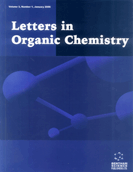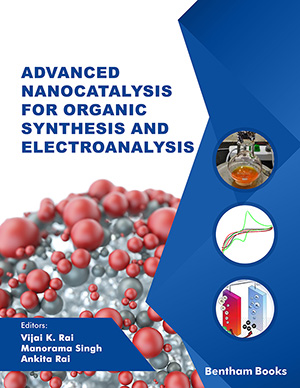Abstract
The use of herbal remedies is more current in illnesses with chronic diseases. One of these important applications is the usage of many plant-derived compounds as cytotoxic agents for the treatment of cancers. Various research has been done on several species of Pulicaria genus for the evaluation of antihistaminic, antimicrobial, antitumor, antiinflammatory, antioxidant, antibacterial, antifungal, insecticide, and leishmanicidal activities. Some studies have shown that these plants have a rich pool of biometabolites like diterpenes, sesquiterpenes, caryophyllenes, flavonoids, and sesquiterpenoids. The main components in several species of this genus are flavonoids and sesquiterpenoids, which have been identified in chemotaxonomic studies and have shown cytotoxic properties. The Scopus and Science Direct sites were studied to find articles on flavonoid and sesquiterpenoid compounds that have been isolated from the Pulicaria genus.
Several biological compounds were isolated from different species of the Pulicaria genus. The main compounds are flavonoids and sesquiterpenoids, which have different biological effects. Its main effect is cytotoxic effect against several cancer cell lines. This study indicates that the Pulicaria genus has cytotoxic activity but posterity studies are needed to probe the active compounds and their possible expansion as novel anticancer drugs.
Keywords: Pulicaria genus, cytotoxic, flavonoid, sesquiterpenoids, anticancer, cancer.
[http://dx.doi.org/10.1016/S1470-2045(08)70173-6] [PMID: 18598931]
[http://dx.doi.org/10.1136/tc.2006.018069] [PMID: 17297069]
[http://dx.doi.org/10.1001/jamainternmed.2016.6530] [PMID: 27775761]
[http://dx.doi.org/10.1002/ijc.25516] [PMID: 21351269]
[http://dx.doi.org/10.1016/S1470-2045(12)70211-5] [PMID: 22658655]
[http://dx.doi.org/10.1200/JGO.18.00200] [PMID: 30908147]
[http://dx.doi.org/10.1590/S0100-879X2000000200004] [PMID: 10657057]
[http://dx.doi.org/10.1056/NEJM199809173391210] [PMID: 9738094]
[http://dx.doi.org/10.3390/molecules26237407] [PMID: 34885992]
[http://dx.doi.org/10.1038/s41598-020-73203-z] [PMID: 33004893]
[http://dx.doi.org/10.21776/ub.jkb.2019.030.03.4]
[http://dx.doi.org/10.3390/pharmaceutics11040163] [PMID: 30987266]
[http://dx.doi.org/10.1016/S0031-9422(03)00163-8] [PMID: 12737973]
[http://dx.doi.org/10.1007/s10311-021-01377-7] [PMID: 35018167]
[http://dx.doi.org/10.4103/0973-1296.59968] [PMID: 20548938]
[http://dx.doi.org/10.2174/1568011053765976] [PMID: 15992352]
[http://dx.doi.org/10.1002/ptr.2240] [PMID: 17661336]
[http://dx.doi.org/10.1016/S1572-5995(05)80045-6]
[http://dx.doi.org/10.3390/plants11091244] [PMID: 35567246]
[http://dx.doi.org/10.1007/s11094-014-1159-7]
[http://dx.doi.org/10.1186/s12870-015-0564-8] [PMID: 26152193]
[http://dx.doi.org/10.32381/JPSR.2018.34.02.17]
[http://dx.doi.org/10.1111/boj.12385]
[http://dx.doi.org/10.5530/jyp.2020.12.2]
[http://dx.doi.org/10.1111/nph.18024] [PMID: 35147224]
[http://dx.doi.org/10.1111/jse.12216]
[http://dx.doi.org/10.1093/aob/mcw033] [PMID: 27098086]
[http://dx.doi.org/10.1080/0028825X.2020.1718168]
[http://dx.doi.org/10.30848/PJB2022-5(26)]
[http://dx.doi.org/10.3390/ijms22063009] [PMID: 33809449]
[PMID: 17013538]
[http://dx.doi.org/10.1002/cbdv.200900014] [PMID: 20151381]
[http://dx.doi.org/10.21608/bfsa.1987.74025]
[http://dx.doi.org/10.1038/s41598-020-74262-y] [PMID: 33051571]
[http://dx.doi.org/10.1021/acs.jnatprod.6b00717] [PMID: 28032767]
[http://dx.doi.org/10.1080/13880200590928825]
[http://dx.doi.org/10.1016/S0367-326X(00)00229-X] [PMID: 11077183]
[http://dx.doi.org/10.1007/PL00013940]
[http://dx.doi.org/10.1007/s00217-022-04163-z]
[http://dx.doi.org/10.5958/j.2229-4473.26.1.043]
[http://dx.doi.org/10.1007/978-1-4615-5335-9_13] [PMID: 9781303]
[http://dx.doi.org/10.1155/2013/162750] [PMID: 24470791]
[http://dx.doi.org/10.1039/c2np20074k] [PMID: 22918397]
[http://dx.doi.org/10.3390/molecules200611272] [PMID: 26096434]
[http://dx.doi.org/10.1016/0278-6915(95)00077-1] [PMID: 8847003]
[http://dx.doi.org/10.1016/0031-9422(82)80105-2]
[http://dx.doi.org/10.21608/bfsa.1998.67958]
[http://dx.doi.org/10.1016/S1995-7645(14)60293-5] [PMID: 25312187]
[http://dx.doi.org/10.1002/cbdv.201000324] [PMID: 22083919]
[http://dx.doi.org/10.1021/np0496183] [PMID: 15844941]
[http://dx.doi.org/10.1142/S0192415X93000340] [PMID: 8135174]
[http://dx.doi.org/10.1021/np50036a019] [PMID: 6533259]
[http://dx.doi.org/10.1021/np50057a038] [PMID: 3404160]
[http://dx.doi.org/10.1016/S0367-326X(00)00133-7] [PMID: 10925006]
[http://dx.doi.org/10.1177/1934578X0800300101]
[http://dx.doi.org/10.1016/0031-9422(81)83087-7]
[http://dx.doi.org/10.1016/0031-9422(92)83288-A]
[http://dx.doi.org/10.1016/S0367-326X(03)00060-1] [PMID: 12781813]
[http://dx.doi.org/10.1002/jsfa.9875] [PMID: 31225640]
[http://dx.doi.org/10.15171/jhp.2018.19]
[http://dx.doi.org/10.1016/0031-9422(92)90041-N]
[http://dx.doi.org/10.1016/j.phytol.2020.06.003]
[http://dx.doi.org/10.1016/0031-9422(90)80130-9]
[http://dx.doi.org/10.1080/14786419.2016.1201671] [PMID: 27348493]
[http://dx.doi.org/10.1080/14786419.2015.1055492] [PMID: 26247309]
[http://dx.doi.org/10.1016/j.phytol.2018.01.021]
[http://dx.doi.org/10.1007/s12012-019-09539-4] [PMID: 31273688]
[http://dx.doi.org/10.2298/ABS180510033A]
[PMID: 28911675]
[http://dx.doi.org/10.1016/0305-1978(91)90084-D]
[http://dx.doi.org/10.1016/S0031-9422(03)00207-3] [PMID: 12946426]
[http://dx.doi.org/10.22159/ijpps.2016v8i9.12814]
[http://dx.doi.org/10.1177/1010428319880080] [PMID: 31603389]
[http://dx.doi.org/10.1016/j.phytol.2015.03.019]
[http://dx.doi.org/10.1080/14786419.2018.1503658] [PMID: 30422011]
[http://dx.doi.org/10.4103/pm.pm_668_18]
[http://dx.doi.org/10.1248/cpb.60.363] [PMID: 22382417]
[http://dx.doi.org/10.1002/cbdv.201800483] [PMID: 30673162]
[http://dx.doi.org/10.1016/j.phytochem.2005.02.004] [PMID: 15771881]
[http://dx.doi.org/10.1002/hlca.200890222]


























